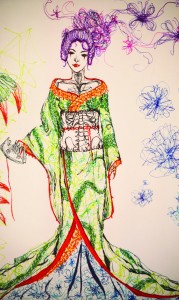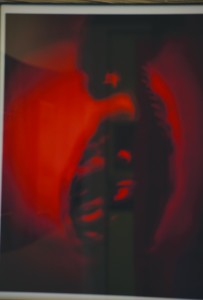Hofstra Chronicle: What year are you and what is your major?
Princy Prasad: Senior, 2015, creative writing and literature and Photography.
HC: What is the name of your gallery and when will it be shown through?
PP: DRY BONES, Nov. 16 - Nov. 22.
HC: What inspired you to do this gallery? What does it mean to you?
PP: In History of Photography, I came upon Edward Steichen’s Backbones and Ribs of Sunflower. It reminded me of an oil pastel collage I made in high school, and suddenly, those dry bones came to life. However, what it means to me has morphed as I made the pieces and brought it together. It was a challenge to myself to take pride in photography, not just for the sake of it, but to be pleased with what I see.
I pushed boundaries and worked with nudes. I juxtapose that with drawings in mediums I haven’t worked in a for awhile or didn’t explore, because I think during school/college, everything becomes an assignment, something set for you to learn or develop. This was my own lesson, to look at the art I could make from old feelings, ideas, concepts. I have a stronger sense of my style, my distinct hand and that is what I want to display.
HC: What is it made of? Describe it to me.
PP: Most are digital photographs printed on matte paper. There are a few drawings in mixed mediums (watercolor pencils, oil pastels, hard pastels, charcoal, pen, ink, etc.).
I am still working on a painting (as I still dislike painting), but there might be some throwbacks to works I did in high school – inspiration, kindle – for the new style, the new me.
HC: What do you hope people take away from the Gallery?
PP: Art for me is a very personal, and sometimes selfish experience. I didn’t make this for anyone else... it didn’t have much of an agenda besides a strong backing of my personal relationship with Christ, but perhaps this is a showcase of me.
It may seem self-centered, but I went through many transitions— – and for me, this is not a hobby...it is a future and a passion. I want my audience to feel that. I want them to see me make things come alive.
HC: What kind of work goes into creating a gallery like this?
PP: Oh, I am no minimalist, and originally, this gallery was to have paintings and more mixed media work, tying in better to the Steichen photograph, but somehow, it went this way.
I, as a true procrastinator, am still trying to figure out myself and this gallery and these works. I (technically) am still adding things in, but I’m happy with what I have given. I have surprised myself, and that...that is the most enjoyable experience.
HC: What is your favorite piece or aspect of it?
PP: My favorite piece would be a vertical close up body shot. I just love that something so common as skin and bone can become something so alien, so different, so... beautiful and flawless.
I love how I took a human body and made it not about breasts or color, there is no specifics... it is just gorgeous form. The collar bone is one of the most beautiful images in this gallery.
Another piece I adore is my “Bone to Life”... they really don’t have titles, but if I would name it, it would be this.
It is a watercolor pencil drawing, and I haven’t really worked in watercolor pencils, but what I created (which was actually one of my last pieces) is simply... I love it.
I love that I made it. I love how it looks – ugly, slightly deformed human hand from skeleton and the sheer brilliance and essence of heavenly fingers bringing the dry bone to life (HA, inserting my “theme” in). I guess I’m proud of it because I am so glad it came from my own hands.
Interview by Elizabeth Merino




